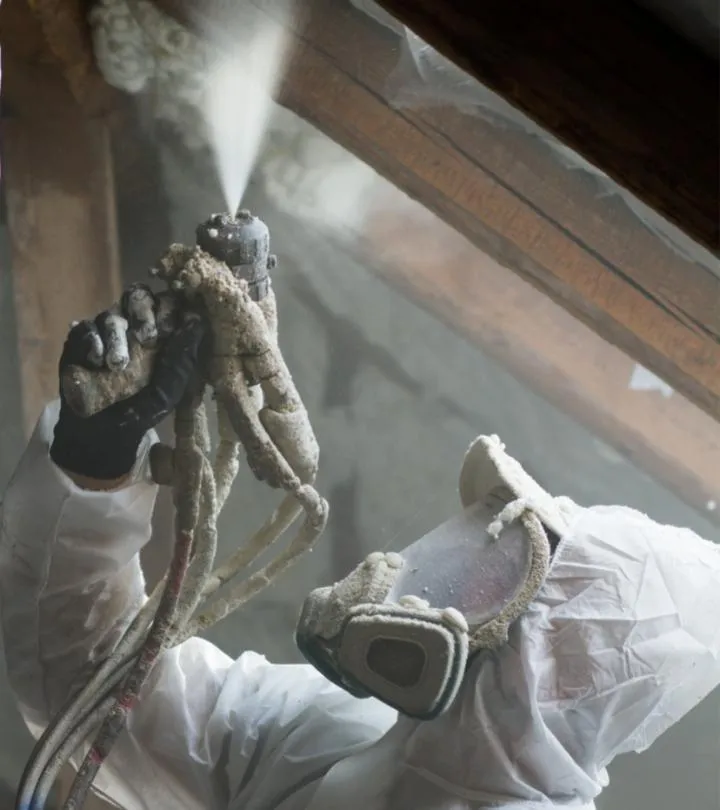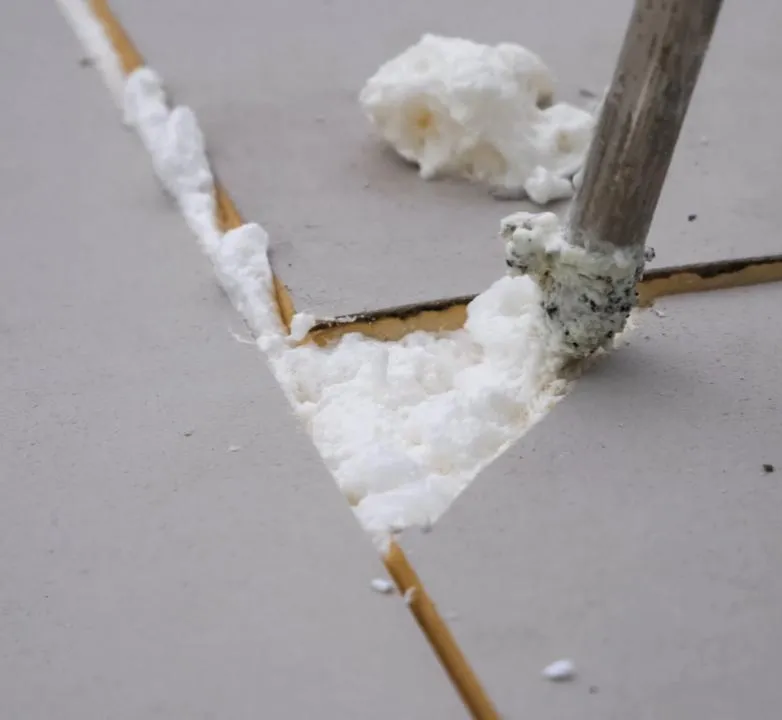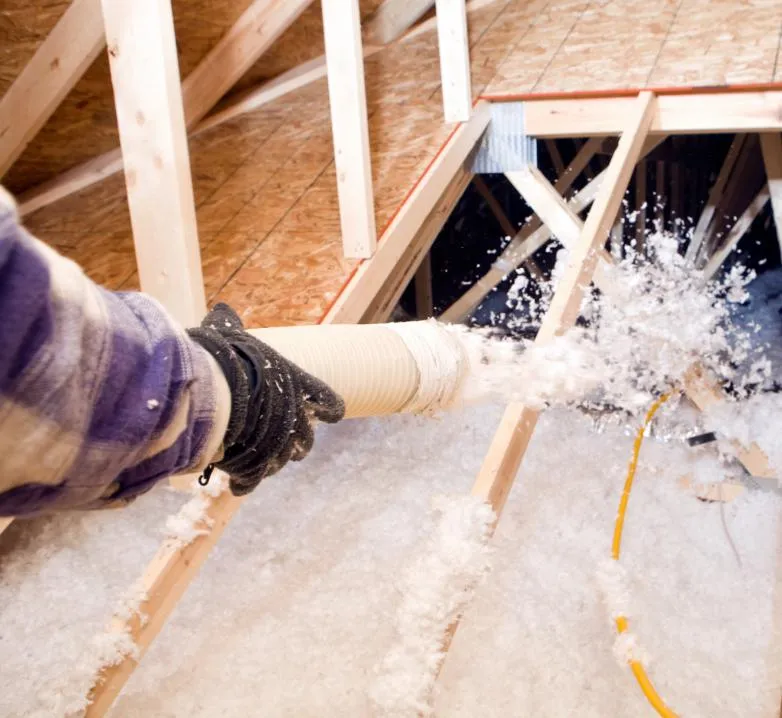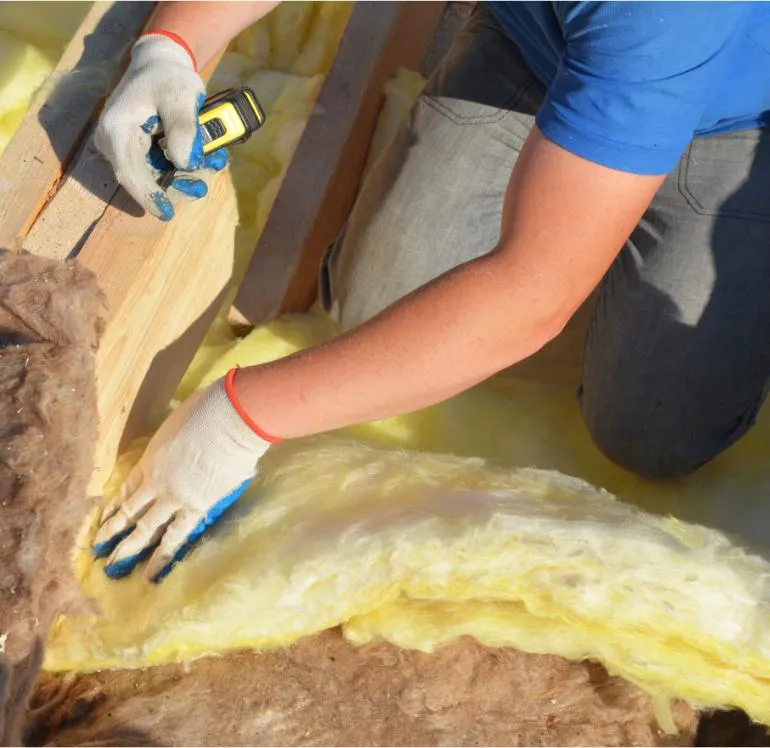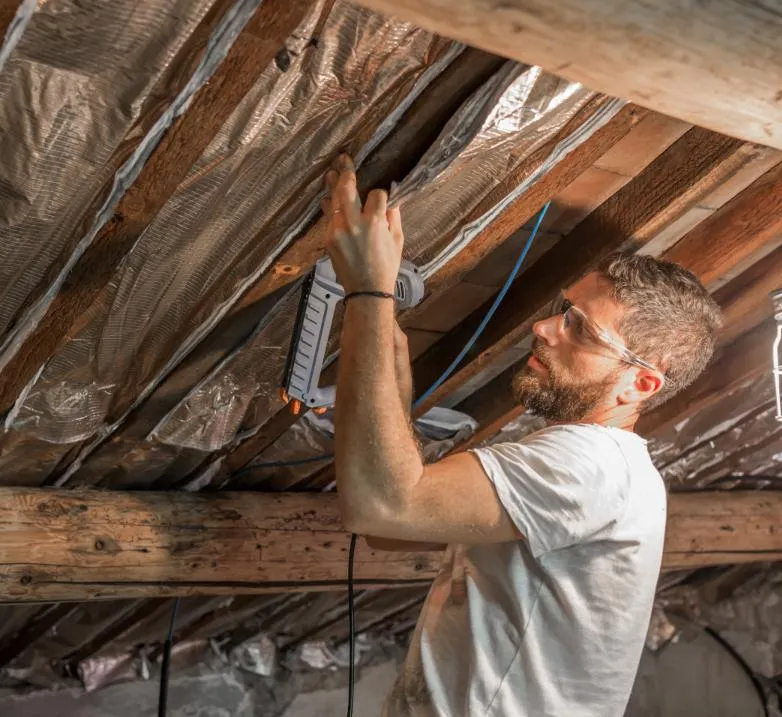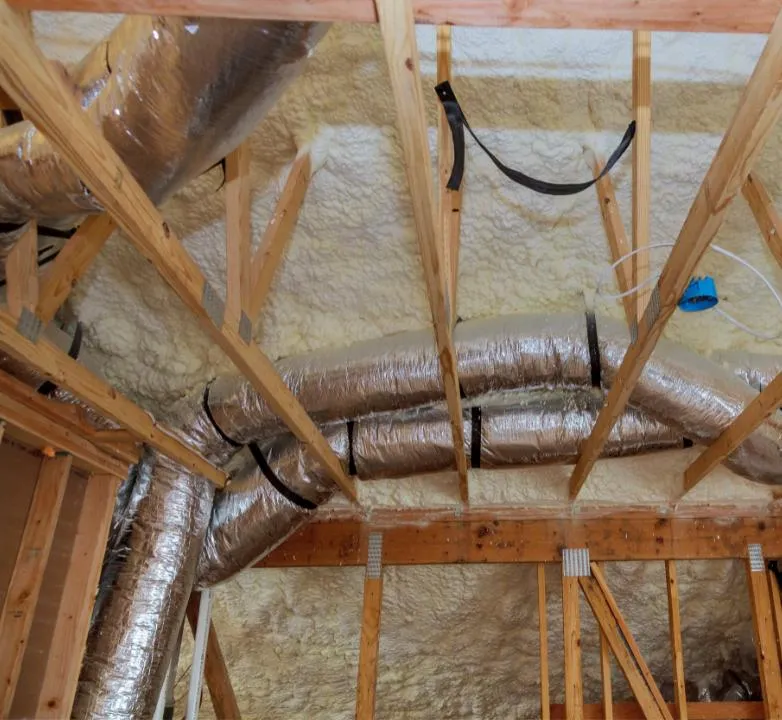SPRAY FOAM EXPERT IN MARYLAND
Spray Foam Insulation Professional Serving In Kensington,MD

Request A Free Quote

Low Upfront Payment

Satisfaction Guarantee

Quick Estimates

Fixed Right Promise

20 Years Experience
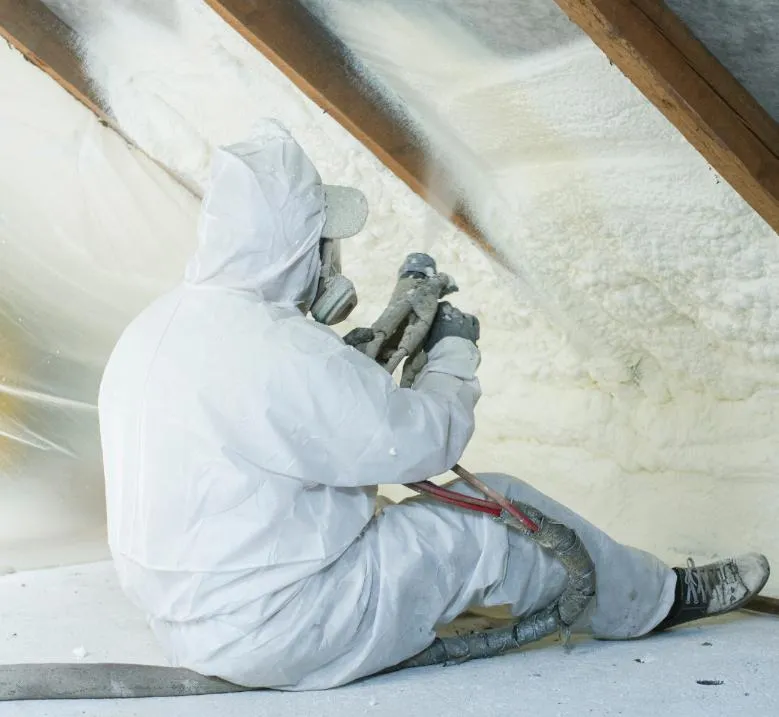
Welcome to Kensington Spray Foam
Spray Foam Contractor In Kensington, MD
Welcome to our website, where we're committed to helping you navigate the complexities of insulation for your home. As you explore our site, you'll find that we've curated a wealth of information on various insulation types and their applications, from radiant barriers to spray foam solutions. We're here to provide you with expert advice and practical tips to enhance your home's energy efficiency and comfort. Let's embark on this journey together, and we assure you, the insights you'll gain here could significantly transform how you maintain your home's temperature and energy consumption. Why not take the first step and see where it leads?
Our Services
Looking for insulation solutions for your home or business? Consider spray foam insulation! It expands to fill gaps and crevices, providing a solid barrier against drafts and moisture. If you'd like to explore our insulation services further, please choose an option below. For more details, click on a service to find out more.
Take 10% Off Any Job Over $5,000
Our Numbers Speak For Themselves
350+
Spray Foam Installations
310+
Batt & Roll Installations
260+
Blown-In & Other Projects
What Our Customers Are Saying

I recently had the pleasure of working with Kensington Spray Foam for my home insulation project, and I can't rave enough about the experience! From the first consultation, their team was professional and friendly, patiently answering all my questions. The installation process was quick and efficient, and I could already feel the difference in temperature in my home. I highly recommend Kensington Spray Foam if you're looking to improve your energy efficiency!
Elliot Rush
Homeowner

Kensington Spray Foam truly exceeded my expectations! I was a bit hesitant about spray foam insulation, but their knowledgeable staff guided me through every step. They took the time to explain the benefits and helped me choose the right solution for my needs. Now, my house feels cozier than ever, and my energy bills have dropped significantly. Thank you, Kensington Spray Foam, for transforming my home!
Billy Hulks
Homeowner

Just had my basement insulated by Kensington Spray Foam, and wow, what a difference! The team was so easy to work with, and they took the time to explain how everything would work. I love that they use eco-friendly products, which made me feel great about my choice. My basement is now a comfortable space that I can actually use! Thanks, Kensington Spray Foam, for your stellar service!
Kelly Roost
Homeowner
Why Choose Spray Foam Insulation
When considering insulation options for your home or business, spray foam insulation stands out as a superior choice. We've explored various options, and time and again, we find spray foam provides a robust solution compared to traditional materials like batt & roll insulation, blown-in insulation, or even newer approaches like reflective and radiant barrier insulation.
As a leading spray foam contractor, we've seen firsthand how spray foam insulation companies are revolutionizing the way we think about energy efficiency. Unlike batt & roll or blown-in insulation, which simply resist conductive and sometimes convective heat flow, spray foam expands to fill every nook and cranny, creating an airtight seal. This comprehensive coverage is something that injected foam insulation attempts to achieve, but spray foam remains unmatched in its effectiveness.
Choosing the right insulation is crucial, and spray foam consistently proves to be the top contender. Whether you're retrofitting an old building or constructing a new one, the adaptability and performance of spray foam are incomparable. For those considering an upgrade or installation, consulting with a knowledgeable spray foam contractor can provide deeper insights into why this solution is optimal for both immediate impacts and long-term benefits.
Benefits of Spray Foam Insulation
Among the many advantages of choosing spray foam insulation, its remarkable energy efficiency stands out as a key benefit. We've found that homes and businesses using spray foam can significantly reduce their heating and cooling costs. This efficiency mainly stems from spray foam's ability to expand and tightly seal off any nooks and crannies, effectively preventing air leaks and drafts.
Especially when applied in the spray foam basement, this insulation forms a barrier that moisture and air cannot penetrate. It's an excellent choice for areas prone to dampness and cold air infiltration. By keeping these areas dry and warm, we're not only improving comfort but also preventing potential mold and structural damage over time. This durability means less maintenance and repair costs down the line.
Moreover, spray foam contributes to a quieter indoor environment. It absorbs sound, reducing the noise that can travel through walls and floors. Whether it's traffic noise or loud conversations, we've noticed a significant decrease in sound transmission in homes with spray foam insulation.
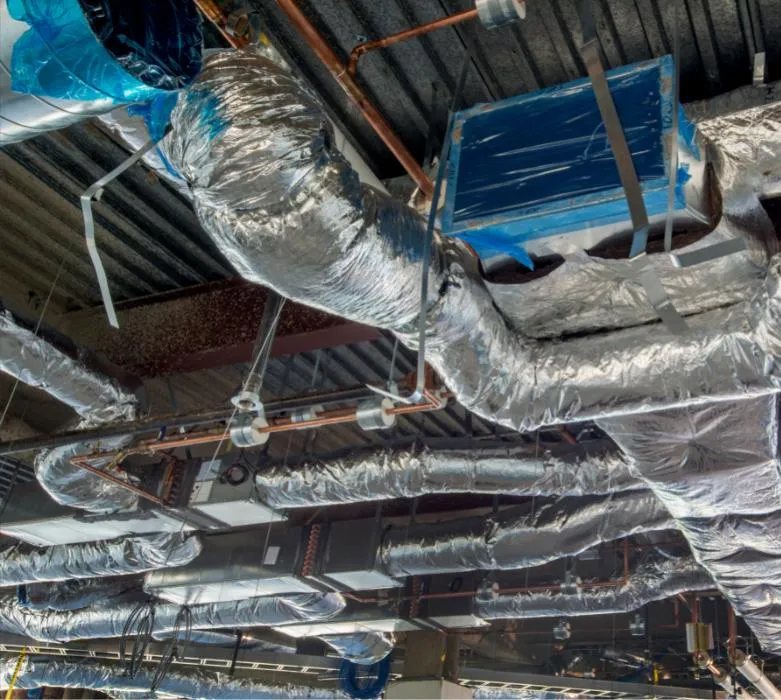
Understanding Radiant Barrier Insulation
Most homeowners are familiar with traditional insulation types, but radiant barrier insulation presents a unique and effective option for reducing heat gain in your home. Unlike bulk insulation that slows down the transfer of heat, radiant barriers reflect heat, keeping your home significantly cooler during the hot months.
Radiant barriers consist of a highly reflective material, usually aluminum foil, which is applied to one or both sides of a number of substrate materials like cardboard, plastic films, strand board, or air infiltration barrier material. We're looking at a setup that's primarily installed in attics where it can effectively block a substantial portion of radiant heat from entering the home, lowering cooling costs and easing the burden on air conditioning systems.
Installing radiant barrier insulation is generally straightforward. It can be laid over existing attic insulation or attached to the roof rafters. By reflecting the sun's heat away before it can be absorbed, the attic and subsequently the entire home stay cooler.
We've found that radiant barriers are especially beneficial in hot climates. By reducing the heat gain, they help maintain a more consistent indoor temperature, which enhances overall comfort and reduces energy consumption. This makes radiant barriers an eco-friendly and cost-effective choice for many homeowners.
Types of Spray Foam Insulation
Let's dive into the different types of spray foam insulation, a crucial component for enhancing your home's energy efficiency. Essentially, there are two main types: open-cell and closed-cell foam insulation. Each serves unique purposes and offers distinct advantages.
Open-cell foam is lighter and more flexible due to its lower density. It's ideal for interior walls, as it provides excellent sound dampening qualities. However, it's less effective as a vapor barrier, making it more suited for indoor use where moisture is not a major concern.
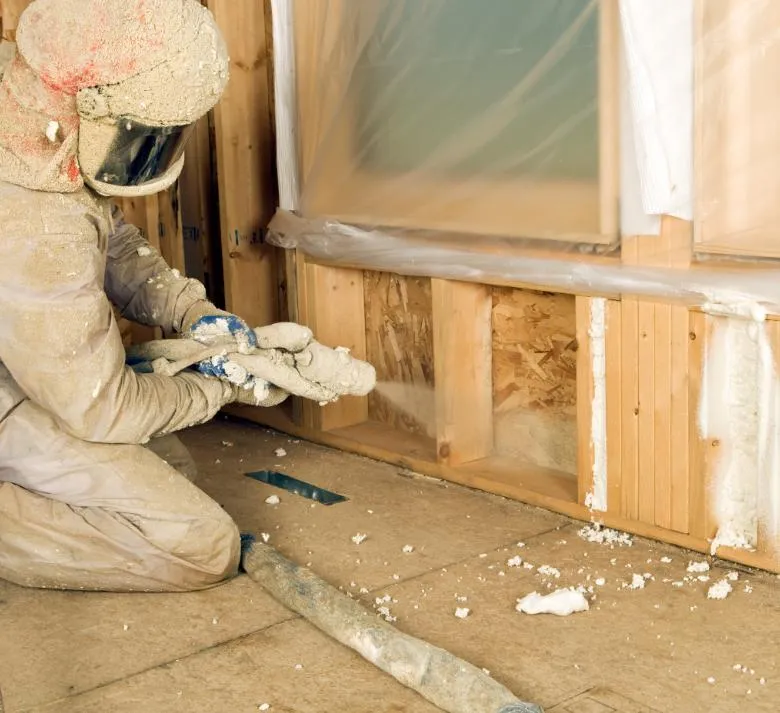
On the other hand, closed-cell foam is denser and more rigid, making it an excellent option for both interior and exterior applications. Its higher density allows it to add structural strength to walls and roofing. Moreover, closed-cell foam has a higher R-value per inch, which means it provides better thermal resistance and effectively reduces energy costs.
Choosing between open-cell and closed-cell foam depends on your specific needs, such as climate, the area of application, and budget. Both types ensure significant energy savings, but it's crucial to consider their respective benefits and limitations to determine the best fit for your home.
How Spray Foam Insulation Works
Spray foam insulation kicks into action the moment it's applied to your walls, expanding rapidly to form a continuous, airtight barrier. This transformation begins as two liquid chemical components, usually stored in separate drums, are mixed together during the application process. We use specialized spray equipment that combines these components at the tip of a spray gun, initiating a chemical reaction.
As we spray, the mixture reacts and expands up to 30-60 times its liquid volume in seconds. This quick expansion allows the foam to fill gaps, cracks, and crevices, creating an effective seal that traditional insulation materials can't match. The foam's expansion properties make it ideal for awkward or hard-to-reach areas, ensuring no space is left unprotected.
Once applied, the foam quickly hardens into a rigid form, adding structural strength to the walls and roof. This curing process, where the foam changes from a soft foam to a solid, takes about 24 hours to complete. During this time, the chemicals cross-link and the foam becomes inert, providing a durable and stable insulation layer that adheres strongly to the surfaces it's applied to.
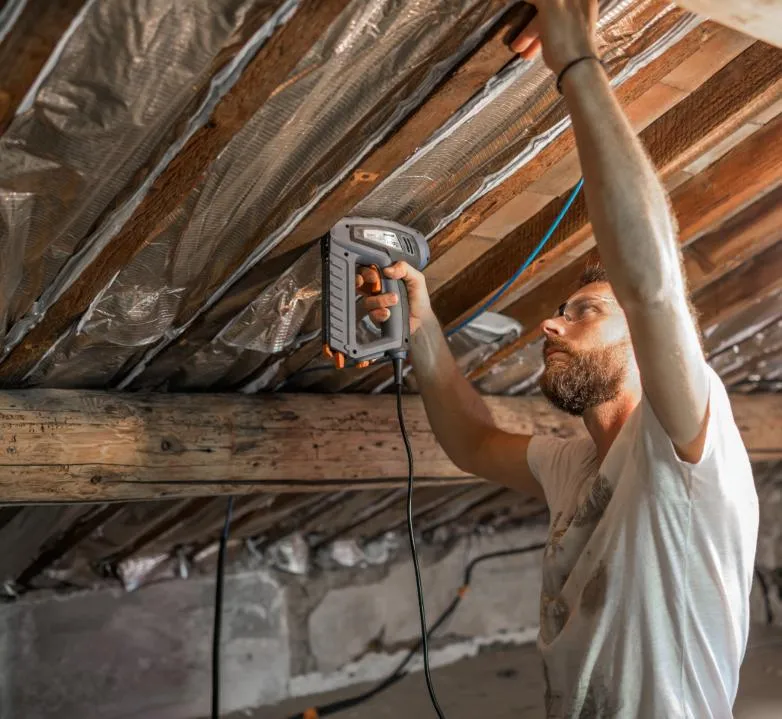
Key Features of Reflective Insulation
Reflecting heat rather than absorbing it, reflective insulation is an excellent choice for homeowners looking to enhance their energy efficiency. This type of insulation primarily works by reflecting radiant heat, keeping homes cooler in the summer and warmer in the winter. It's not just efficient; it's also lightweight and easy to install, making it a popular choice among DIY enthusiasts.
We've found that one of the key features of reflective insulation is its versatility. It can be used in a variety of locations, including attics, walls, and roofs. This flexibility allows us to tailor insulation solutions specifically to each home, ensuring maximum effectiveness. Additionally, it's often used in conjunction with other types of insulation to create a comprehensive barrier against heat and cold.
Another advantage is the material's resistance to moisture. Unlike some other forms of insulation, reflective insulation doesn't absorb moisture, which can help prevent the growth of mold and mildew. This feature is particularly important in damp climates or in spaces like basements where moisture levels are typically higher.
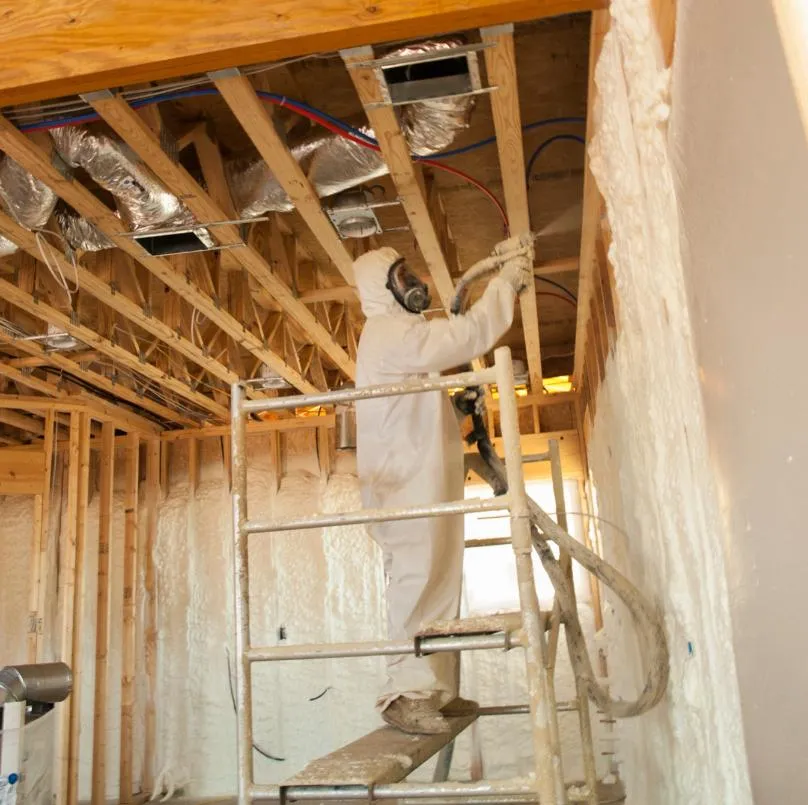
Choosing the Right Spray Foam Insulation
While reflective insulation offers excellent benefits in terms of moisture resistance and heat reflection, when it comes to filling gaps and providing an airtight seal, spray foam insulation is unmatched. We've found that choosing the right type of spray foam insulation depends largely on your specific needs and the area of application.
There are two primary types of spray foam insulation: open-cell and closed-cell. Open-cell foam is softer and more flexible, making it ideal for soundproofing and indoor applications where moisture control isn't a primary concern. It's less dense, so it uses fewer materials, which can be a cost-effective solution for large areas.
On the other hand, closed-cell foam provides a higher R-value per inch, making it more effective at insulating and moisture resistance. It's denser and more rigid, which adds structural strength to the walls. This type is especially useful in areas prone to moisture such as coastal regions.
It's important to consult with a professional spray foam contractor who can assess your property and determine the most suitable foam for your needs. They'll ensure that the installation is done correctly, maximizing the effectiveness of the insulation and the comfort of your space.
Best Practices for Spray Foam in Basements
When applying spray foam insulation in basements, it's crucial to adhere to specific best practices to ensure optimal performance and safety. We've gathered essential tips to guide you through this process effectively.
Firstly, always ensure the basement surfaces are dry and clean before application. Moisture or debris can compromise the insulation's adhesion and overall effectiveness. We recommend conducting a thorough inspection and prep of the area to avoid such issues.
Secondly, choose the right type of spray foam for your basement. Closed-cell foam is typically best for below-grade applications because of its higher R-value and moisture resistance. It's crucial to select a product that suits your specific climate and basement conditions.
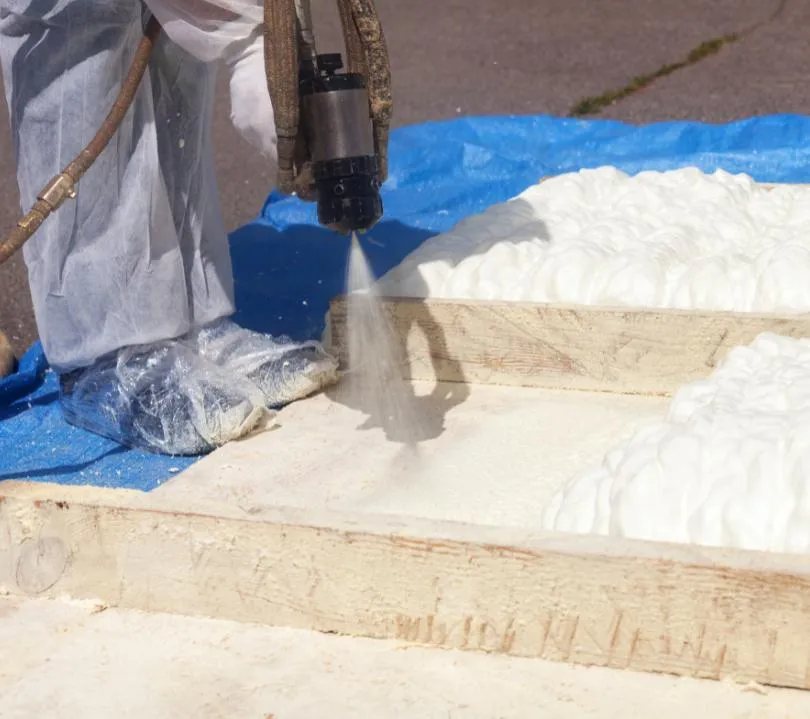
Thirdly, proper ventilation during application is non-negotiable. Spray foam emits fumes that can be harmful if inhaled in concentrated amounts. We always use proper personal protective equipment and ensure the space is well-ventilated.
Lastly, consider professional installation. While DIY might seem cost-effective, the precision and knowledge a professional brings can significantly enhance the insulation's performance and longevity.
Blown-In Insulation
After exploring the best practices for using spray foam in basements, it's worth considering another effective insulation option: blown-in insulation. We've found that one of the biggest advantages of blown-in insulation is its versatility. It's ideal for filling in odd-shaped or hard-to-reach spaces in attics and walls. This method involves blowing or spraying insulation material, typically fiberglass or cellulose, into spaces that need it, ensuring a tight fit and comprehensive coverage.
We also appreciate how blown-in insulation improves energy efficiency. It effectively seals air leaks and reduces the amount of heat that escapes during the winter and enters during the summer. This attribute not only keeps our homes more comfortable but also cuts down on heating and cooling costs.
Another benefit we can't ignore is the installation process. It's relatively quick and doesn't require extensive alteration to existing structures. This means less mess and disruption in our homes. Additionally, blown-in insulation is known for its sound-dampening qualities, making our living spaces quieter.
Considering these benefits, it's clear why we often recommend blown-in insulation as a top choice for both new construction and retrofit projects. It's an efficient, cost-effective way to enhance home comfort and energy performance.
Injected Foam Insulation
Why not consider injected foam insulation as another innovative solution for your home's insulation needs? We've found that this option offers exceptional performance in areas that are tricky to insulate with traditional materials. Injected foam fills up cavities and voids, creating a tight seal that significantly enhances energy efficiency.
Unlike other forms, injected foam insulation doesn't require extensive demolition or exposure to the elements. We simply drill small holes in the existing structure, inject the foam, and then it expands to fill up the spaces completely. This makes it ideal for retrofitting older homes where minimizing disruption is a priority.
The benefits don't stop at installation ease. This type of insulation also helps in reducing air infiltration, which can be a major source of energy loss. It essentially acts as an air barrier, preventing drafts and keeping your home comfortable throughout the year.
Moreover, injected foam has excellent sound dampening properties. We've noticed a noticeable reduction in outside noise in homes where it's been installed, making it a great choice for those living in noisy environments or busy streets.
Let's embrace the benefits of injected foam insulation together, ensuring your home is more energy-efficient, quieter, and comfortable.
Foam Insulation Companies Near Me
As we explore various insulation options, it becomes clear that each type has its unique strengths and weaknesses. Reflective insulation, for instance, excels in reducing heat transfer from radiation, making it ideal for hot climates. It's lightweight and easy to handle, but it doesn't provide as much R-value per inch compared to other materials.
Blown-in insulation offers a great solution for irregularly shaped areas and existing finished areas. It's perfect for attics or between walls as it fills gaps and voids, creating a tight seal. However, it can settle over time, potentially decreasing its effectiveness unless properly maintained.
Spray foam insulation stands out for its superior air sealing properties. It expands to fill cracks and gaps, significantly reducing air leakage. This type can be more expensive upfront but can lead to substantial savings on energy bills. It's also resistant to moisture, which helps prevent mold growth.
Injected foam is similar to spray foam but is typically used for insulating existing walls. It provides excellent thermal and acoustic insulation without the need for extensive renovation.
Each insulation type offers distinct benefits depending on the specific needs of a space, making it crucial to consider the environment and goals of your insulation project.
Our Partners
Looking for expert vinyl fence installation for a durable and stylish outdoor solution, contact our friends at North Miami Beach Fencing.
Discover the best patio pavers companies near me in the Fort Myers Area, contact our friends at FM Pavers of Fort Myers.
For reliable towing assistance and towing service contact our friends at Glenmont Towing Service.
Our work is guaranteed to satisfy.
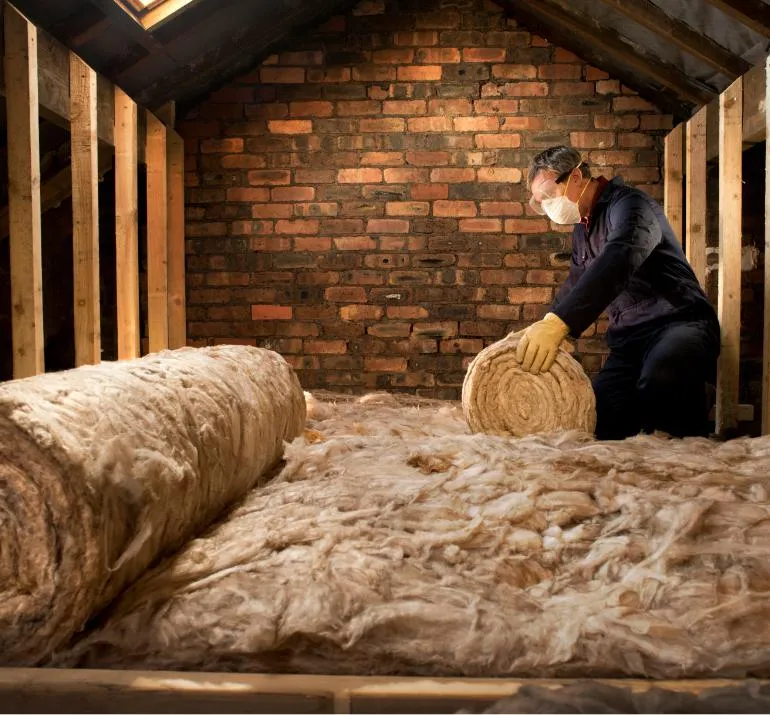
Get a free quote
Fill out the form below to request a free consultation
Connect With Us
© Copyright 2025 Kensington Spray Foam. All Rights Reserved.
Zip codes we serve:20895,20891,20896,20889,20814,20902,20892,20894,20852,20910,20815,20810,20811,20813,20824,20825,20827,20511,20916,20997,20907,20908,20911,20915,20918,20901,20015,20906,20851,20012,20897,20913,20817,20047

